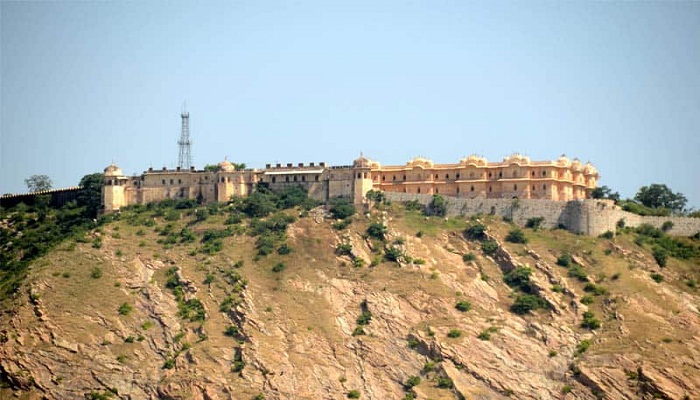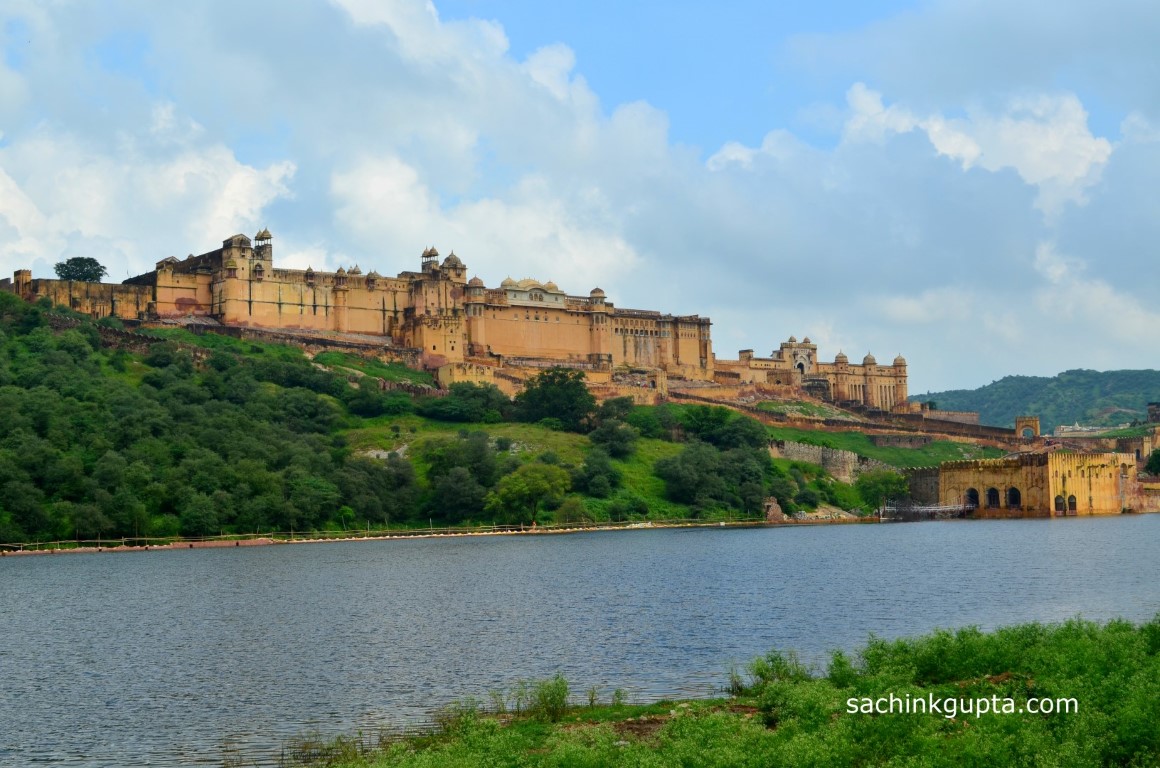
During the monsoon season, Jaipur, India’s charming Pink City, becomes a captivating paradise. Jaipur provides visitors with a singularly enchanted experience with its rain-drenched streets, the scent of damp earth, and its rich architectural legacy surrounded by lush flora. Enjoying real Rajasthani food, exploring the lively bazaars, and taking in the city’s cultural diversity without the intense heat are all made possible during this season. A memorable trip through time and culture is guaranteed in Jaipur during the monsoon season, regardless of your preference for adventure, history, or tranquil beauty. Let’s see places that you can visit this season for a memorable travel journey.
1. Galtaji Temple (Monkey Temple)

About 10 kilometers east of Jaipur is the holy Hindu pilgrimage site known as Galtaji Temple, or the Monkey Temple. This temple complex, which is tucked away in the Aravalli Hills, has beautiful architecture, freshwater springs that occur naturally, and holy kunds (water tanks), of which Galta Kund is the most revered. Saint Galav, who is said to have pondered here, is honored by the temple. Its distinct attractiveness is enhanced by the fact that the area is home to a sizable population of monkeys. Galtaji Temple, which is surrounded by thick greenery and offers stunning views, is a tranquil haven for both tourists and believers, particularly during the monsoon season.
2. Nahargarh Fort

During the monsoon season, Nahargarh Fort, perched atop the untamed Aravalli Hills, provides a stunning haven. Rainstorms turn the fort into a foggy sanctuary, with verdant vegetation encircling its ancient walls. Originally constructed as a defensive stronghold and refuge, Nahargarh (literally “Abode of Tigers”) was constructed in the 18th century by Maharaja Sawai Jai Singh II. These days, it offers sweeping views of Jaipur, which are particularly captivating when clouds pass over the city. The fort is a must-see during the monsoon season because of its Indo-European construction, elaborate paintings, and calm atmosphere, which provide the ideal fusion of history, nature, and peace.
3. Jal Mahal

During the monsoon season, Jaipur’s magnificent Water Palace, Jal Mahal, is transformed into a captivating sight. This architectural wonder, which is tucked away in the center of Man Sagar Lake, seems to float on the glistening water, producing an amazing sight as rains dance across the lake’s surface. Its red sandstone edifice, which was constructed in the Rajput architecture, stands out strikingly against the verdant Aravalli Hills in the distance. Its allure is enhanced by the monsoon, which makes it the ideal location for serene sightseeing and photography. During Jaipur’s rainy season, Jal Mahal provides a tranquil haven, whether you choose to enjoy the refreshing wind or admire its reflection in the rain-kissed waters.
4. Amber Fort

During the monsoon season, Jaipur’s most famous monument, Amber Fort, assumes an awe-inspiring appeal. This magnificent fort, which was constructed in the 16th century by Raja Man Singh I and is tucked away in the Aravalli Hills, is a magnificent example of Rajput and Mughal architecture. The fort is encircled by lush foliage, which makes for a captivating contrast to the foggy skies as the rains cascade over its walls of golden sandstone. The picturesque Maota Lake, located at the base of the fort, is a great place for photography and leisurely exploration since it reflects the grandeur of the rain. During the monsoon season, Amber Fort provides a captivating experience rich in natural beauty and history, whether you choose to explore its elaborate courtyards or take in expansive vistas of Jaipur.
5. Jamwa Ramgarh Dam

About 30 kilometers from Jaipur, the Jamwa Ramgarh Dam was originally a crucial source of water for the Pink City. Maharaja Sawai Madho Singh II commissioned this artificial reservoir, which was constructed on the Banganga River, in 1903 to supply drinking and agriculture water. The dam and the surrounding area become a charming haven during the monsoon season, drawing in nature enthusiasts and bird watchers with their verdant surroundings and calm waterways. Despite the fact that environmental changes have caused the lake to dry up recently, attempts are being made to restore its ecosystem3. An insight into its natural beauty and historical significance might be gained by visiting during the rainy season.

Leave a Reply